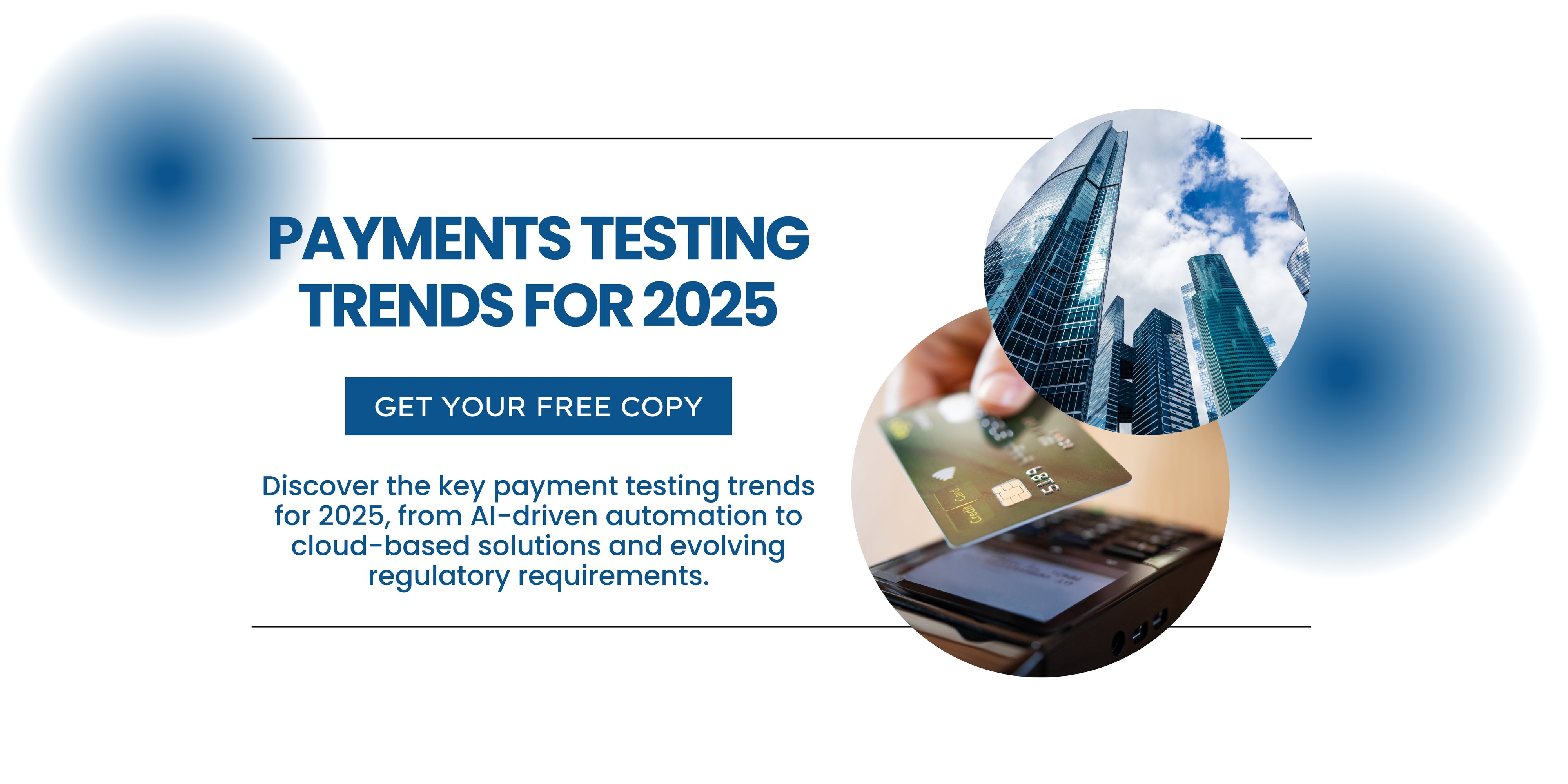The payments industry is evolving faster than ever. As digital transactions dominate the marketplace, regulatory requirements tighten, and new technologies reshape the global payments ecosystem, financial services companies must rethink their approach to testing.
As this landscape continues to evolve, fast, accurate, and secure payment testing operations become an increasingly important competitive differentiator.
2025 is an inflection point for the payment industry - one that requires agility, innovation, and a strategic shift toward smarter testing solutions.
“A strategic inflection point is a time in the life of a business when its fundamentals are about to change. That change can mean an opportunity to rise to new heights. But it may just as likely signal the beginning of the end”
― Andrew S. Grove, Only the Paranoid Survive
Manual testing processes alone can no longer keep up with the rapid pace of change or the increased environmental complexity that exists today. Instead, organizations need to adopt automated testing solutions that improve efficiency, security, and scalability - and work side-by-side with their legacy payment systems to optimize resource allocation.
In our Payment Testing Trends for 2025 Report, we explore the major forces that are reshaping the future of the payment industry.
You can download the complete guide by clicking the image below.

Following is a brief look at what is contained in the document.
1. Digital Transactions Dominate
Today's consumers demand the convenience of fast, frictionless, and secure payment experiences. With the rise of digital wallets, contactless payments, and instant transactions, payment systems must now process higher transaction volumes at faster speeds while maintaining flawless accuracy.
That means payment infrastructures must be agile, accurate, and highly resilient - making the need for robust testing strategies more critical than ever before.
2. Self-Service Speeds Up Testing & Compliance
The certification and compliance processes in the payments industry are notoriously demanding. Organizations must continuously update systems to align with evolving message specifications and regulatory mandates. Traditionally, these updates occur within tight deadlines, creating operational bottlenecks and inefficiencies.
Self-service testing platforms empower organizations to streamline and accelerate their payment testing and compliance operations. These platforms give testers access to real-time data, enable immediate results, and minimize reliance on external resources.
3. High-Quality Test Data is a Business Imperative
Research from Gartner found that poor data quality destroys business value, with surveyed organizations indicating that poor data quality is responsible for an average of $15 million per year in losses.
The simple fact is, ensuring that all digital transactions are executed perfectly every time requires high-quality test data. Incomplete or obsolete data can lead to processing failures, compliance issues, and operational inefficiencies. Poor data quality can also increase costs due to higher interchange rates, chargebacks, and potential penalties.
4. Cloud-Based Testing Drives Efficiency & Scalability
Legacy testing environments are quickly becoming obsolete. Web-enabled and cloud-based testing solutions are enabling financial institutions to conduct secure, scalable, and cost-effective testing across global markets.
According to PwC’s 2024 Cloud and AI Business Survey, 72% of top-performing companies are all-in on cloud data modernization.
5. Navigating the Evolving Regulatory Landscape
The payment industry is experiencing heightened regulatory scrutiny, with new and complex compliance requirements emerging worldwide. As the regulatory framework continues to evolve, financial institutions must remain vigilant and agile.
Compliance mandates such as PCI DSS, PSD2, and DORA introduce stringent security and operational resilience requirements, making rigorous testing a necessity.
6. AI Can Transform Payment Testing
Artificial intelligence is poised to reshape the payment testing landscape. While we are still in the early stages of AI-driven testing, its potential for enhancing efficiency and accuracy is significant.
From predictive analytics that detect vulnerabilities before they occur to automated test case generation that speeds up development cycles, AI is capable of transforming payment testing from a reactive process into a proactive, intelligent function.
7. Build a Testing Centric Culture
The rapid evolution of the payments industry demands a shift in corporate mindset. Organizations must recognize that testing and quality assurance are not dusty back-office functions that must be tolerated, they are strategic activities that drive business success.
To thrive in an increasingly digital-first world, financial services companies must foster a culture of agility, resilience, and innovation. This means embracing new testing technologies, improving collaboration across teams, and prioritizing security and compliance.
“Objectives such as improved customer experience, risk reduction, increased QA efficiency, and reduced testing effort drive automation in quality. While quality automation is certainly on the rise, organizations still face critical challenges. An average of 27% report challenges related to dealing with legacy systems and the fast-changing application landscape.”
- Capgemini, World Quality Report 2023-24
8. Payment Testing at a Crossroads
It seems clear that the payments industry has hit an inflection point. The rapid shift to digital transactions, increasing regulatory demands, and the rise of real-time payments are reshaping the landscape. Traditional payment testing methods can no longer keep up with the speed, complexity, and security requirements of the rapidly evolving global payment ecosystem.
To stay ahead of this surging tide of change, organizations must move beyond outdated approaches to testing and embrace automation, integration, and self-service technologies that significantly improve productivity and accuracy. Intelligent testing strategies will be key to reducing risk, ensuring compliance, and delivering seamless customer experiences in an increasingly digital world.
Get the Payment Testing Trends for 2025 Guide
As transaction volumes continue to grow, cyber-security and fraud threats increase, and compliance requirements intensify, payment testing operations must become more automated, data-driven, and proactive.
Organizations that embrace next-generation testing technologies will gain a significant competitive edge. Those who don’t risk falling behind in an industry that demands constant innovation and resilience.
The trends shaping the future of payment testing are fast-moving and complex. To gain deeper insights into how your organization can stay ahead of all these changes, download the full Payment Testing Trends for 2025 guide.
This comprehensive resource provides expert analysis and actionable insight to help financial institutions, payment processors, issuers, acquirers and all payment industry players optimize their testing operations.


